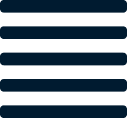We work with many young companies started by inspiring founders who often have incredible marketing and branding chops. But, when it comes to inventory, that expertise is hard to hone and hire for. Even if you’re not an expert, there are things you can do like follow our 7 step guide and get familiar with a few basic definitions:
1. Lead Time
This is the most basic concept on the list and probably something you’ve already heard from your suppliers. Lead time is simply the number of weeks or months between when an order is placed with a supplier and when the finished good can be delivered. Your fully baked lead time will be not only how long it takes your supplier to make your product, but also how long it will take them to ship it to you.
2. Minimum Order Quantities (MOQus)
If you’re a small brand, you’ve probably already run into this concept with your suppliers. Minimum order quantity is the minimum quantity in units per SKU, units per category or dollars that your supplier will allow you to order. Although you might do a lot of sophisticated analysis to figure out the exact amount of inventory that you need, it might not matter if this amount is below the minimum order quantity defined by your supplier. While it might not be possible, you should definitely try to negotiate the MOQu down to give you flexibility and avoid holding more inventory than you need or can sell.
3. Buffer Stock (Safety Stock) and Service Level
No matter how accurately you are, there is always risk that you may have underestimated the inventory you need. To avoid stockouts, companies keep extra stock on hand by setting a service level target which is the probability that all customer orders will be fulfilled. New brands might want to set a high (99%) so as not to damage the brand with stockouts. But, service level does rely on relatively predictable demand which many young brands don’t have. That’s why at Fuse, we rely on a weeks of supply target.
4. Weeks-of-Supply
Weeks-of-supply is calculated as total inventory / weekly sales. Weeks of supply can be calculated based on historical results or as a forward looking metric based on your forecast. Many inventory professionals consider the forward looking approach to be best practice because seasonality can vary drastically throughout the year. In Fuse, we seamlessly calculate your weeks of supply target and build it into your inventory buffer. We’ll look to your expected seasonality and make sure that you’re always ordering enough for next season.
5. Sell-Through Rate
Weeks of supply and sell-through, when used together, can help give you a complete picture of your inventory position. Sell-through is defined as total sales divided by inventory stock at the beginning of the period. So, if you sold 500 silk blouses in January but started with 1,000 silk blouses in inventory, your sell-through rate would be 50%. A high sell-through rate and a low weeks of supply number means that you need to restock while a low sell-through rate (5%) and a high weeks of supply number means that you’ve overbought and may need to mark down your inventory. One of the most relied upon concepts in inventory planning, sell through can give you a good benchmark for understanding the health of your inventory.
6. Reorder Point and Reorder Level
The reorder point is the level of inventory at which a reorder is triggered. This point is calculated as the forecast sales during the lead time plus buffer stock. The reorder point tells you when you need to reorder, but not necessarily how much (the reorder level). Fuse can help you understand both metrics by seamlessly linking the pieces together. We provide a reorder recommendation based on the buffer you set, your lead time and the demand forecast you’ve created using our advanced algorithms.
7. Open to Buy
An open to buy puts all of the concepts of inventory planning together in one report. It is a budget that highlights how much capital is available to spend in a given period, and how much already has open POs against it. In many instances, a planner may know exactly how much product she needs to order to support demand, but she may no longer have the budget to meet this demand. For example, she might need $150,000 of product next month to reach the brand’s sales targets, but $75,000 may already be allocated to open POs. In this type of example, the planner’s job is to optimize the allocation of the remaining budget to best serve the business. Usually, at this point, the best course of action is to determine how best to optimize margin. The planner will evaluate which SKUs can generate the most profit given the limited budget available rather than simply doubling down on best sellers.
At Fuse, we’ve implemented these concepts and best practices in our software to vastly simplify the analyses that planners have to do. We’re here to help you focus on your business, not your inventory.
Sources:
https://www.thebalance.com/sell-through-rate-2890389
http://www.threebuckets.com/category/formula-cheat-sheet/
https://en.wikipedia.org/wiki/Service_level
https://www.thebalance.com/open-to-buy-planning-2890318
http://www.businessdictionary.com/definition/lead-time.html
https://en.wikipedia.org/wiki/Reorder_point
http://dictionary.cambridge.org/us/dictionary/english/minimum-order-quantity
.png)

.png)









.png)



%20hover.png)
.png)
hover.png)







Let us know what you think about this post
Put your comment below.